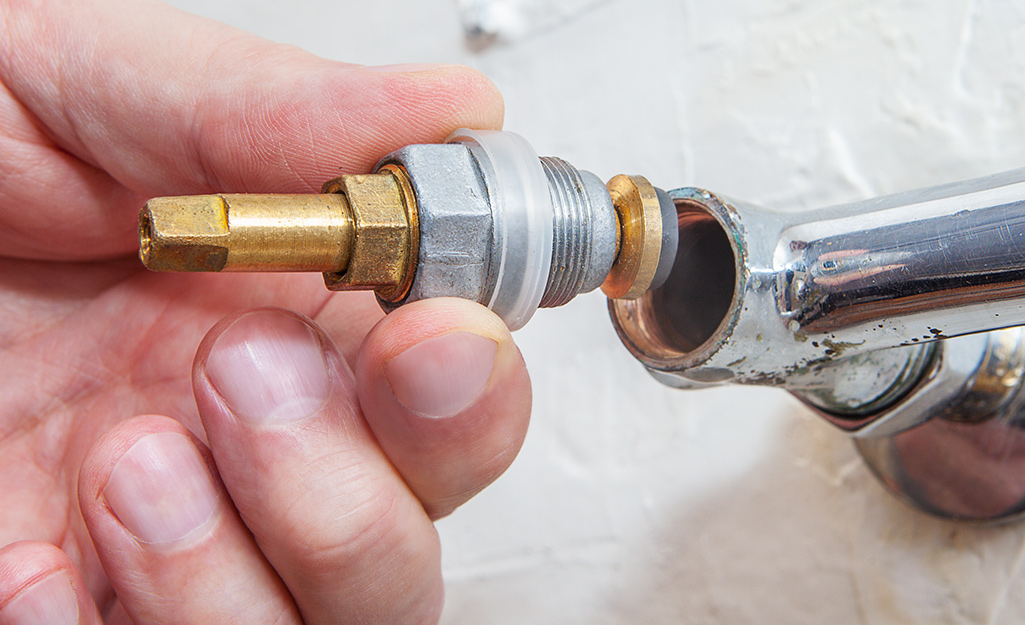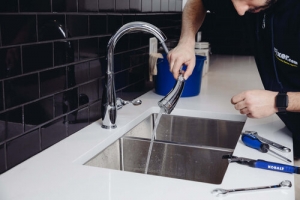How It's Important to Mend a Dripping Faucet
How It's Important to Mend a Dripping Faucet
Blog Article
This article on the next paragraphs relating to Should I Repair or Replace a Leaky Faucet? is highly captivating. Don't miss out on it.

Dripping faucets might seem like a small trouble, however their effect exceeds just the nuisance of the audio. From drainage to sustaining unnecessary economic expenses and health threats, neglecting a leaking faucet can cause various consequences. In this write-up, we'll explore why it's crucial to resolve this typical household concern quickly and effectively.
Wastefulness of Water
Ecological Effect
Leaking faucets add significantly to water wastefulness. According to the Environmental Protection Agency (EPA), a solitary faucet dripping at one drip per second can waste more than 3,000 gallons of water each year. This not just strains water resources but additionally influences communities and wild animals based on them.
Financial Expenses
Increased Water Bills
Past the environmental influence, trickling taps can pump up water bills considerably. The built up wastage over time converts into higher energy costs, which could have been stayed clear of with timely repairs.
Potential Building Damages
Furthermore, long term dripping can bring about damage to components and surface areas bordering the faucet. Water build-up can trigger staining, rust, and even architectural problems if left ignored, leading to extra fixing prices.
Wellness Concerns
Mold and Mildew Growth
The consistent presence of moisture from a leaking tap produces an optimal environment for mold and mildew and mold growth. These fungis not just endanger indoor air top quality however additionally posture health risks, specifically for people with respiratory problems or allergic reactions.
Waterborne Diseases
Stationary water in dripping faucets can become a breeding place for bacteria and other virus, boosting the threat of waterborne conditions. Impurities such as Legionella germs thrive in stagnant water, potentially resulting in major diseases when consumed or breathed in.
Do it yourself vs. Professional Repair service
Benefits and drawbacks of Do It Yourself Repair Service
While some may try to take care of a leaking tap themselves, do it yourself fixings come with their own collection of challenges. Without proper knowledge and tools, DIY efforts can exacerbate the problem or lead to incomplete repairs, prolonging the trouble.
Advantages of Working With a Professional Plumber
Employing a professional plumber makes sure that the underlying source of the leaking tap is addressed properly. Plumbing professionals possess the know-how and equipment to identify and fix tap issues effectively, conserving time and decreasing the risk of further damage.
Step-by-Step Overview to Dealing With a Dripping Tap
Devices Needed
Before trying to fix a dripping faucet, gather the required devices, consisting of an adjustable wrench, screwdrivers, substitute components (such as washers or cartridges), and plumber's tape.
Typical Tap Issues and Their Solutions
Determine the type of tap and the specific problem triggering the drip. Usual troubles consist of damaged washing machines, rusty shutoff seats, or damaged O-rings. Refer to manufacturer guidelines or on-line tutorials for detailed advice on repair services.
Safety nets
Normal Upkeep Tips
To prevent leaking taps, do routine upkeep such as cleaning up aerators, inspecting for leaks, and changing worn-out components promptly. Furthermore, take into consideration installing water-saving gadgets or updating to more effective components.
Importance of Prompt Repair Works
Resolving trickling taps as soon as they're discovered stops more water wastefulness and potential damage, ultimately saving both water and money over time.
Effect On Residential Or Commercial Property Value
Assumption of Well-Maintained Residential Or Commercial Property
Preserving a home in good condition, including resolving maintenance concerns like dripping faucets, improves its perceived value and charm amongst possible buyers or tenants.
Impact on Resale Value
Characteristics with well-maintained plumbing fixtures, including faucets, command greater resale worths in the realty market. Dealing with leaking taps can contribute to a favorable impact during residential property evaluations and settlements.
Environmental Duty
Specific Contribution to Preservation
Taking responsibility for taking care of dripping taps lines up with broader initiatives toward water conservation and ecological sustainability. Every individual's actions jointly make a considerable impact on maintaining precious sources.
Lasting Living Practices
By prioritizing prompt repair work and embracing water-saving practices, people add to sustainable living practices that benefit both existing and future generations.
Conclusion
Resolving a dripping faucet surpasses mere comfort; it's a necessary action toward preserving water, reducing monetary prices, and safeguarding health and building. Whether through DIY repair services or specialist aid, taking action to fix dripping faucets is a tiny yet impactful means to advertise liable stewardship of sources and add to a much healthier, extra lasting future.
How to Fix a Leaky Faucet: Step-by-Step Repair Guide
A leaky faucet may seem like a simple annoyance, but if it's not fixed promptly, that leak could cost hundreds to potentially thousands. From water damage to mold, mildew, and high water bills, even a tiny leak can be catastrophic if left unattended. Damage like this can even affect the overall value of your home, so it's important to take the right approach for leaky faucet repair. You may need the help of a plumber in some cases, but we've got a few tips you can try on how to fix a leaky faucet before calling the pros.
Four Faucet Types
When you're learning how to fix a leaky faucet, the first step is knowing what kind of faucet you're working with! There are four common types.
Cartridge Faucets
Cartridge faucets come in one- or two-handled varieties. In one-handled cartridge faucets, hot and cold water combines in a single cartridge. In the two-handled versions, hot and cold water are controlled separately and mixed in the faucet.
Ball Faucets
Ball faucets have a single lever you push up and down to adjust the pressure and rotate to change the temperature. A slotted metal ball controls the amount of water allowed into the spout.
Compression Washer Faucets
They're the oldest type of faucet, but they're still used in many homes — especially older ones. Compression faucets have two separate handles that, when turned, raise or lower the washer that seals a water valve. This valve stops water from flowing through the faucet when it is turned off.
Disc Faucets
Disc faucets rarely need to be repaired due to their maintenance-free design. The water flow is controlled by two discs — the upper one raises and lowers against a fixed lower disc, creating a watertight seal. If your disc faucet starts leaking, you may need to replace the seals or clean residue buildup from the inlets.
Fixing a Leaky Faucet
Step 1: Turn Off the Water
Whether you're learning how to fix a leaky bathtub faucet or how to fix a leaky kitchen faucet, always turn off the water supply to your working area when you're fixing a leak. The last thing you want is a flood added to your list of things to fix.
Look for the shutoff valves below your sink or around the tub and turn them clockwise to stop the water flow. If your faucet doesn't have shutoff valves, you may need to turn off the water for the whole house. Check to make sure it's off by turning the faucet on. If nothing comes out, you're ready to start the repair.
Step 2: Take Apart the Faucet
How you disassemble your faucet depends on the type of fixture you have. You can use a flathead screwdriver to remove the caps on top of the handle or handles for cartridge and compression faucets. Inside, you should see handle screws. Unscrew these with a screwdriver to remove the handle.
Disc- and ball-style faucets will typically have an inlet screw near the handle, and removing that will reveal the interior of the faucet.
Detach the Valve Stem
For cartridge- and compression-style faucets, you'll see the inner valve stem or cartridge once you remove the faucet handles. If you have a compression faucet, unscrew the brass valve stem. If you have a cartridge faucet, pull out the cartridge. If your cartridge has been in place for a while, it may require some tools or extra force to remove it due to mineral deposits.
Examine and Replace Parts
Once you've removed the parts, check them out to confirm what needs to be replaced. You may see corroded rubber washers, O-rings, stems, or cartridges. On a ball-style faucet, check the seats and springs for damage.
If you need to repair a leaky disc faucet, check the inlet and seals on the lower disc.
Once you determine what parts must be replaced, visit your local hardware store. Bring the damaged parts with you to ensure you can purchase the correct components to replace them.
Clean Valves and Faucet Cavity
If you've removed a stem or cartridge, you may notice mineral buildup in the faucet's threads. Use white vinegar to clean the valve seat by soaking it for a few minutes, then scrub it away with a soft toothbrush and rinse with warm water. You can also clean the interior of the faucet in the same way.
Reassemble the Faucet
Once your faucet is cleaned and the required parts have been replaced, it's time to reassemble it. Put the pieces back together and slowly turn the water supply back on. Doing this slowly is crucial because too much initial water pressure can damage the new hardware you've just installed.
https://homewarranty.firstam.com/blog/how-to-fix-leaky-faucet

As a fervent reader on 4 Common Reasons for a Leaky Faucet, I think sharing that piece of content was a great idea. Be sure to take the time to share this blog posting if you enjoyed it. I appreciate reading our article about Leaky Faucets: Why They Happen & What to Do About Them.
Report this page